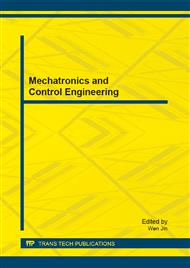p.242
p.247
p.253
p.259
p.265
p.269
p.275
p.281
p.285
Image Segmentation Algorithm Research for Sport Graphics Based on Multi-Layer Background Subtraction
Abstract:
Segmentation of motion in an image sequence is one of the most challenging problems in image processing, while at the same time one that finds numerous applications. In this paper, we propose a robust multi-layer background subtraction technique which takes advantages of local texture features represented by local binary patterns (LBP) and photometric invariant color measurements in RGB color space. Due to the use of a simple layer-based strategy, the approach can model moving background pixels with quasiperiodic flickering as well as background scenes which may vary over time due to the addition and removal of long-time stationary objects. The use of a cross-bilateral filter allows to implicitly smooth detection results over regions of similar intensity and preserve object boundaries.
Info:
Periodical:
Pages:
265-268
Citation:
Online since:
July 2013
Authors:
Keywords:
Price:
Сopyright:
© 2013 Trans Tech Publications Ltd. All Rights Reserved
Share:
Citation:


